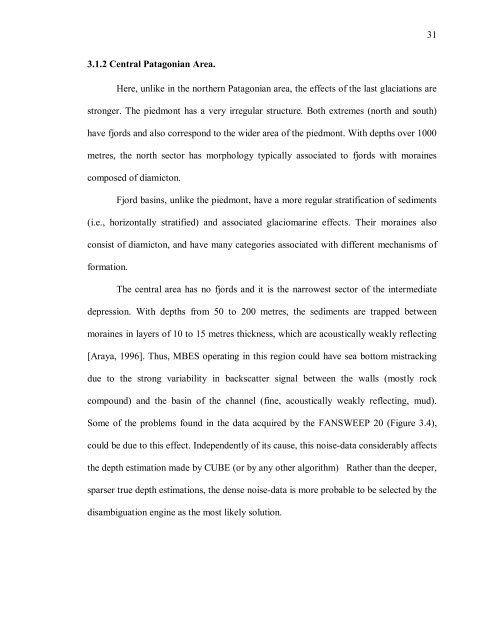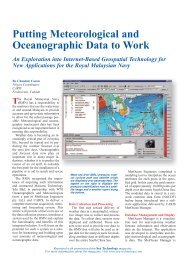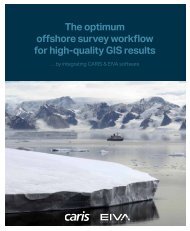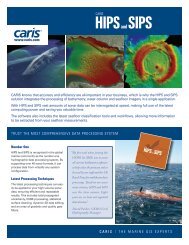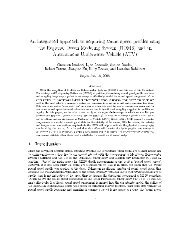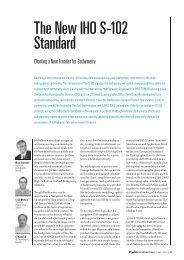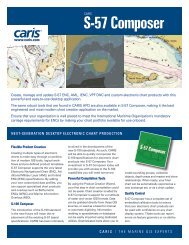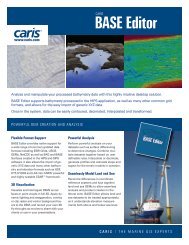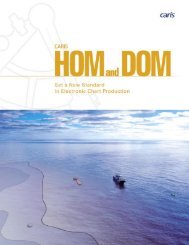Tuning the CARIS implementation of CUBE for Patagonian Waters.pdf
Tuning the CARIS implementation of CUBE for Patagonian Waters.pdf
Tuning the CARIS implementation of CUBE for Patagonian Waters.pdf
Create successful ePaper yourself
Turn your PDF publications into a flip-book with our unique Google optimized e-Paper software.
3.1.2 Central <strong>Patagonian</strong> Area.<br />
Here, unlike in <strong>the</strong> nor<strong>the</strong>rn <strong>Patagonian</strong> area, <strong>the</strong> effects <strong>of</strong> <strong>the</strong> last glaciations are<br />
stronger. The piedmont has a very irregular structure. Both extremes (north and south)<br />
have fjords and also correspond to <strong>the</strong> wider area <strong>of</strong> <strong>the</strong> piedmont. With depths over 1000<br />
metres, <strong>the</strong> north sector has morphology typically associated to fjords with moraines<br />
composed <strong>of</strong> diamicton.<br />
Fjord basins, unlike <strong>the</strong> piedmont, have a more regular stratification <strong>of</strong> sediments<br />
(i.e., horizontally stratified) and associated glaciomarine effects. Their moraines also<br />
consist <strong>of</strong> diamicton, and have many categories associated with different mechanisms <strong>of</strong><br />
<strong>for</strong>mation.<br />
The central area has no fjords and it is <strong>the</strong> narrowest sector <strong>of</strong> <strong>the</strong> intermediate<br />
depression. With depths from 50 to 200 metres, <strong>the</strong> sediments are trapped between<br />
moraines in layers <strong>of</strong> 10 to 15 metres thickness, which are acoustically weakly reflecting<br />
[Araya, 1996]. Thus, MBES operating in this region could have sea bottom mistracking<br />
due to <strong>the</strong> strong variability in backscatter signal between <strong>the</strong> walls (mostly rock<br />
compound) and <strong>the</strong> basin <strong>of</strong> <strong>the</strong> channel (fine, acoustically weakly reflecting, mud).<br />
Some <strong>of</strong> <strong>the</strong> problems found in <strong>the</strong> data acquired by <strong>the</strong> FANSWEEP 20 (Figure 3.4),<br />
could be due to this effect. Independently <strong>of</strong> its cause, this noise-data considerably affects<br />
<strong>the</strong> depth estimation made by <strong>CUBE</strong> (or by any o<strong>the</strong>r algorithm) Ra<strong>the</strong>r than <strong>the</strong> deeper,<br />
sparser true depth estimations, <strong>the</strong> dense noise-data is more probable to be selected by <strong>the</strong><br />
disambiguation engine as <strong>the</strong> most likely solution.<br />
31


